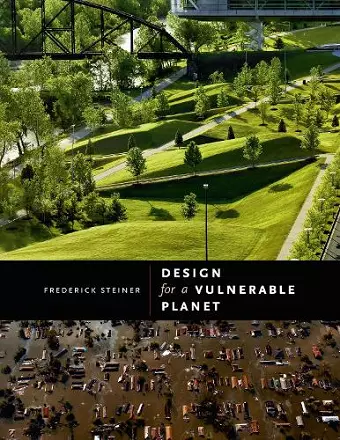Design for a Vulnerable Planet
Format:Hardback
Publisher:University of Texas Press
Published:1st Apr '11
Currently unavailable, and unfortunately no date known when it will be back

Spotlighting innovative design projects in places ranging from Texas to Italy and China, this book sounds a call for architects, designers, and regional planners to create a built environment that works on a regional scale in harmony with the planet's ecology.
Spotlighting innovative design projects in places ranging from Texas to Italy and China, this book sounds a call for architects, designers, and regional planners to create a built environment that works on a regional scale in harmony with the planet’s eco
We inhabit a vulnerable planet. The devastation caused by natural disasters such as the southern Asian tsunami, Hurricanes Katrina and Ike, and the earthquakes in China's Sichuan province, Haiti, and Chile—as well as the ongoing depletion and degradation of the world's natural resources caused by a burgeoning human population—have made it clear that "business as usual" is no longer sustainable. We need to find ways to improve how we live on this planet while minimizing our impact on it. Design for a Vulnerable Planet sounds a call for designers and planners to go beyond traditional concepts of sustainability toward innovative new design that fosters regeneration and resilience.
Drawing on his own and others' experiences across three continents, Frederick Steiner advocates design practice grounded in ecology and democracy and informed by critical regionalism and reflection. He begins by establishing the foundation for a more ecological approach to planning and design, adopting a broad view of ecology as encompassing human and natural, urban and wild environments. Steiner explores precedents for human ecological design provided by architect Paul Cret, landscape architect Ian McHarg, and developer George Mitchell while discussing their planning for the University of Texas campus, the Lake Austin watershed, and The Woodlands. Steiner then focuses on emerging Texas urbanism and extends his discussion to broader considerations beyond the Lone Star State, including regionalism, urbanism, and landscape in China and Italy. He also examines the lessons to be learned from human and natural disasters such as 9/11, Hurricane Katrina, and the BP oil spill. Finally, Steiner offers a blueprint for designing with nature to help heal the planet's vulnerabilities.
The strengths of Design for a Vulnerable Planet lie with its engaging, diverse, and reflective narrative. Steiner draws on decades of firsthand experience and knowledge of the architecture, landscape architecture, and planning fields. The chapters are (mostly) short and readable, and they provide a breadth of views on design and a variety of scales of action…. The book contributes to our understanding of the process and product of ecological and regional design, particularly in Texas, and the dynamics and challenges of projects that increase sustainability. It also enhances the foundation and awareness of the new regionalism and landscape urbanism and bridges design disciplines, providing an inside view of how the groups can—and do—work together toward the same goal of sustainable design. Design for a Vulnerable Planet will be of interest to students who endeavor to understand how planners and designers can build a healthy, attractive, and resilient world.
-- Amy J. Lynch, University of Pennsylvania * Journal of Planning Education and ResearISBN: 9780292723856
Dimensions: 279mm x 216mm x 25mm
Weight: 1334g
304 pages